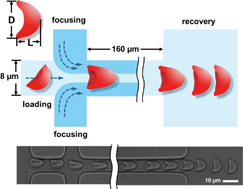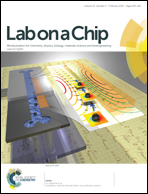Characterization of red blood cell deformability change during blood storage†
Abstract
Stored red blood cells (RBCs) show progressive deformability changes during blood banking/storage. Their deformability changes over an 8 weeks' storage period were measured using a microfluidic device. Hydrodynamic focusing controls the orientation and position of individual RBCs within the microchannel. High-speed imaging (5000 frames s−1) captures the dynamic deformation behavior of the cells, and together with automated image analysis, enables the characterization of over 1000 RBCs within 3 minutes. Multiple parameters including deformation index (DI), time constant (shape recovery rate), and RBC circularity were quantified. Compared to previous studies on stored RBC deformability, our results include a significantly higher number of cells (>1000 cells per sample vs. a few to tens of cells per sample) and, for the first time, reveal deformation changes of stored RBCs when traveling through human-capillary-like microchannels. Contrary to existing knowledge, our results demonstrate that the deformation index of RBCs under folding does not change significantly over blood storage. However, significant differences exist in time constants and circularity distribution widths, which can be used to quantify stored RBC quality or age.


 Please wait while we load your content...
Please wait while we load your content...